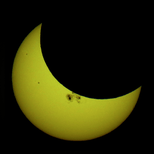Solar eclipse of June 20, 1974
| Solar eclipse of June 20, 1974 | |
|---|---|
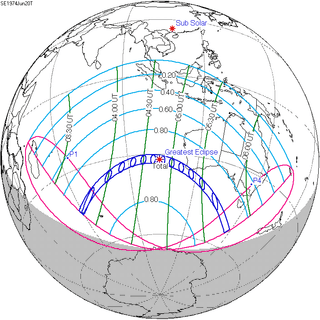 Map | |
| Type of eclipse | |
| Nature | Total |
| Gamma | -0.8239 |
| Magnitude | 1.0592 |
| Maximum eclipse | |
| Duration | 309 sec (5 m 9 s) |
| Coordinates | 32°06′S 103°42′E / 32.1°S 103.7°E |
| Max. width of band | 344 km (214 mi) |
| Times (UTC) | |
| Greatest eclipse | 4:48:04 |
| References | |
| Saros | 146 (25 of 76) |
| Catalog # (SE5000) | 9452 |
A total solar eclipse occurred on June 20, 1974. A solar eclipse occurs when the Moon passes between Earth and the Sun, thereby totally or partly obscuring the image of the Sun for a viewer on Earth. A total solar eclipse occurs when the Moon's apparent diameter is larger than the Sun's, blocking all direct sunlight, turning day into darkness. Totality occurs in a narrow path across Earth's surface, with the partial solar eclipse visible over a surrounding region thousands of kilometres wide.
Related eclipses
Solar eclipses of 1971-1974
Each member in a semester series of solar eclipses repeats approximately every 177 days and 4 hours (a semester) at alternating nodes of the Moon's orbit.
Note: Partial solar eclipses on February 25, 1971 and August 20, 1971 occur in the next lunar year set.
| Descending node | Ascending node | |||
|---|---|---|---|---|
| Saros | Map | Saros | Map | |
| 116 | 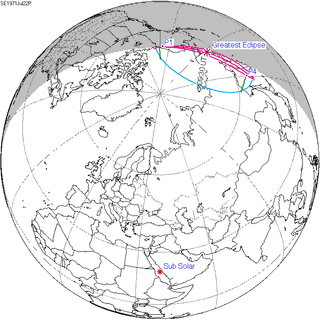 July 22, 1971 Partial |
121 | 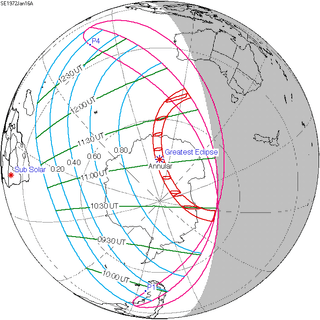 January 16, 1972 Annular | |
| 126 | 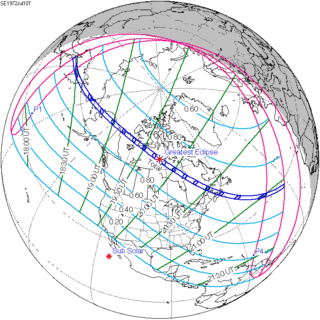 July 10, 1972 Total |
131 | 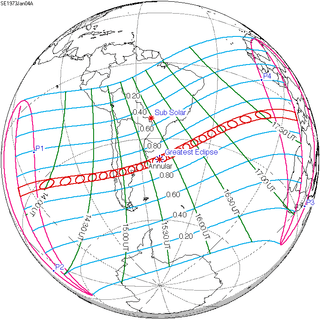 January 4, 1973 Annular | |
| 136 | 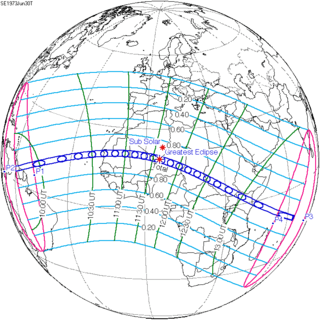 June 30, 1973 Total |
141 | 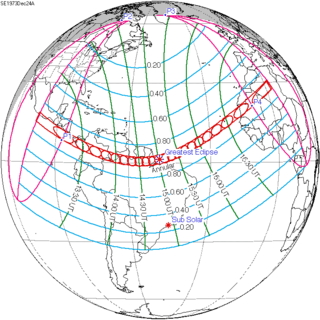 December 24, 1973 Annular | |
| 146 |  June 20, 1974 Total |
151 | 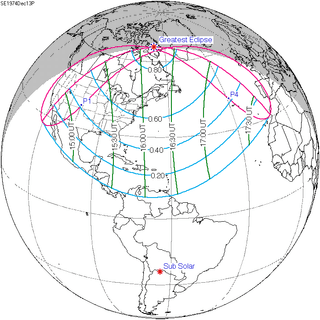 December 13, 1974 Partial | |
Notes
References
- Earth visibility chart and eclipse statistics Eclipse Predictions by Fred Espenak, NASA/GSFC
| Wikimedia Commons has media related to Solar eclipse of 1974 June 20. |
